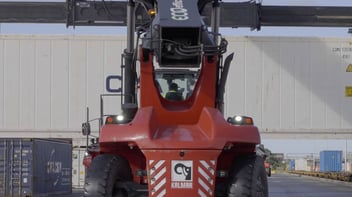For the past few years, workers have borne the brunt of not only a rude comment, or angry tirade, but also a sharp uptick in retail-based crime - in particular, heightened violent and hostile behaviour.
Our media has focused heavily on ram raids and retail violence, and for good reason. According to the New Zealand police, six months into 2023, there have been an average of two ram raids a day, across the country. No shop has been spared. Malls, department stores, petrol stations, and local neighbourhood dairies have all been targets. Moreover, NZ Retail reported that 92% of retailers responding to their retail crime survey had experienced some form of retail violence in the past twelve months.
While ram raids are not as much of a pervasive issue across the ditch in Australia, violent and aggressive behaviour in retail stores still is. South Australia has already implemented legislation that protects frontline workers from enduring abuse, and New South Wales is planning on following suit. This legislation change is a welcome relief for retailers, sending the message that violent behaviour is not welcome in-store.
This escalation in violence is scary and frustrating to watch. Retail employers are having a particularly tough time managing their workplaces when they turn into crime scenes. Despite initiatives from the police and government, employers still have to understand what’s going on, and the best practice ways they can help prevent it.
Get fresh H&S insights weekly
What factors underpin violent and aggressive behaviour?
Like all crime, ram raids in particular, are a complex issue.
The circumstances that cause a perpetrator to engage in crimes like these are simply not black and white. 76% of those arrested for ram raids in New Zealand were under the age of 18.
Journalist John Campbell wrote about his experiences interviewing teenage ram raiders, to explore exactly what kind of circumstances led to their actions.
By no way does this excuse what they do, but to understand how the wider societal structures have contributed to greater crime instances is valuable and necessary to getting down to solving the root cause.
Tensions caused by an astronomical rise in the cost of living while inflation continues to grow have only egged on retail crime. Pressures to still obtain material wealth and social media championing the thieves and their wares, all help contribute to the sharp rise in ram raids that we’ve seen over the last year.
It’s an incredibly tough situation to solve - and the consequences of ram raids are tragically high.
The high cost of living has had a negative impact for retailers, stretching their already-low numbers of staff thin. Add to the mix heightened stress from customers—some furious about rising costs—and workers' capacity to cope with the growing onslaught of work is weakened. The growing fear of an aggressive customer interaction, or the worry of an overnight ram raid, creates increased stress and negative impacts their mental health.
Not only are floor staff working largely minimum wage jobs - a stressful situation given today’s aforementioned cost of living crisis - but they’re now forced to deal with outwardly challenging situations with the fear of physical and psychological harm looming.
What are some small steps employers and safety leaders can take to mitigate this issue?
It comes as no surprise that employers need to take into consideration the health, safety, and general wellbeing of their frontline in-store workers. Their job is stressful enough as it is, without having to deal with violent or aggressive customers.
Managing mental health and safety risks along with physical risks is part of New Zealand and Australian employment law. Employers must take all these factors into account, and mitigate risks wherever they can.
Unfortunately, when it comes to crime, employers’ options are limited. Incidents involving gun crime or ram raids themselves are of course, in the police’s domain. However, employers can implement some preventative measures, to help bolster the safety of their workplace and engage in small steps to keep their people safe.
1. Establish your expectations
Ensure you’ve established clear structural processes around these incidents in your stores. Make sure that the expectations of what staff should and shouldn’t do are in writing, and not left up in the air. With issues as significant as theft and aggressive behaviour, people’s lives are undoubtedly at stake - and the safety procedures must be crystal clear.
Primarily, employers need to ensure that their frontline workers’ safety is paramount. If a ram raid or swarm theft is occurring, workers should be advised to stand back, and let the product be taken - rather than try to play the hero and fight back.
While some heroic employees will feel motivated to stop the crime, there’s no guarantee of their safety. Products can always be replaced, but people cannot. Acknowledge the courage of these people for wanting to step in, but advise them to rather, step back.
In smaller-scale circumstances - such as a particularly rude or aggressive customer abusing one staff member in-store - ensure you’ve taught your staff adequate de-escalation techniques, to help mitigate the situation and avoid making it worse. With the right tools and training, your people are then equipped to deal with a threatening customer and avoid escalation into violence.
It’s important that staff are trained to report all incidents, no matter how small, to ensure that your company maintains an accurate record of what’s occurring. Understanding the data and trends is the first step towards implementing effective preventative measures.
2. Invest in the right structural tools
Ensure your health and safety reporting system is robust and adequately deals with emergency situations. Can employees contact the relevant people in an instant? Do you have some form of emergency notification system if something goes wrong?
When it comes to preventative and protective tools, invest in options that suit your specific organisational needs. Your size, culture, and workplace distribution will be unique; and finding a provider that caters adequately to your retail needs is essential.
In the negotiation process, don’t forget to include specific examples of incidents in your stores if you can. These help the software provider to understand the intimate details of your needs and ensure they can provide accordingly.
Some retailers integrate their point-of-sale (POS) software with their safety system. This allows employees to report an incident at the touch of a button, without having to leave the counter. Other valuable investments include physical deterrents to keep your space safe, such as bollards in front of the store doors, or fog machines that are activated when intruders enter the premises.
.png?width=1200&height=600&name=Copy%20of%20RETAIL%20SAFETY%20(1).png)
3. Stay open and honest
Any good leader will know that openness and honesty are really the best policies. In tough times, where ram raids are rampant and gun crime rising, it’s critical that as a leader, you acknowledge the reality of the situation.
Get real with your team. Don’t shy away from being frank about how bad the current climate is. Owning the challenges you’re facing as a business will help your employees feel like their own fears and stressors are understood. Trying to sugar-coat an obviously difficult situation won’t help anyone.
However, in this note, also make the time to point out positives and encourage your frontline managers to look for the good experiences amongst the bad. When dealing with persistent negativity, it can be easy to focus on only looking for more negatives - making what’s already a stressful, tiring job even more discouraging. If managers can celebrate customers that are pleasant to deal with, they can help turn the general mood around - even just a small bit.
Make no mistake, this is not advice to pretend that everything’s okay - far from it. Instead, it’s a gentle reminder of confirmation bias. When we’re primed with a particular experience or perspective, we’re more inclined to seek it out around us. If we only ever share the negatives of the job, we’re likely to search for the negatives more often.
Final words
One ram raid is a ram raid too many; but fortunately the latest data suggest that ram raids are finally on the decline.
This is hopeful news for retailers as theft, violence and crime remain the persistent recurring themes in the industry for the last several years. This period of time has been characterised by endless stories of ram raids, or of tragic cases where extreme violence against shop workers has occurred.
While the root causes of these problems are perhaps bigger than what we as retailers can try to solve, it’s essential that we remain aware of how to mitigate these issues internally, and what we can do to reduce the gravity of these incidents - for the safety of our people.
.png)



.png?width=352&name=Copy%20of%20RETAIL%20SAFETY%20(2).png)

.jpg?width=352&name=AI%20health%20and%20safety-1%20(1).jpg)


